
In observance of International Women’s Day 2024, let us remember the tremendous achievements and accomplishments that women all around the world have achieved and renew our resolve to fight for gender equality. Today is a constant reminder of how far we still have to go before we can say that equality is the rule rather than the exception in our world. It captures the essence of women’s empowerment by reiterating the common cries that motivate the fight for equality and by praising the merit of honoring women in all their facets and achievements. The importance of understanding that this unique day is interwoven with a broader, more vibrant fabric—a worldwide movement demanding a more equal future in which we all participate—has never been greater than it is today.
Key Takeaways
- International Women’s Day champions the global movement toward gender equality.
- The day serves as a powerful reminder of women’s empowerment and their pivotal role in society’s advancement.
- Celebrating women is central to acknowledging their achievements and highlighting the persistent gaps in equality.
- The equality movement is an integral part of recognizing and acting on the need for change in our communities.
- International Women’s Day is a platform for amplifying women’s voices and experiences around the world.
- Embracing the spirit of this day encourages ongoing advocacy and activism in the face of gender-based challenges.
The Origin of International Women’s Day
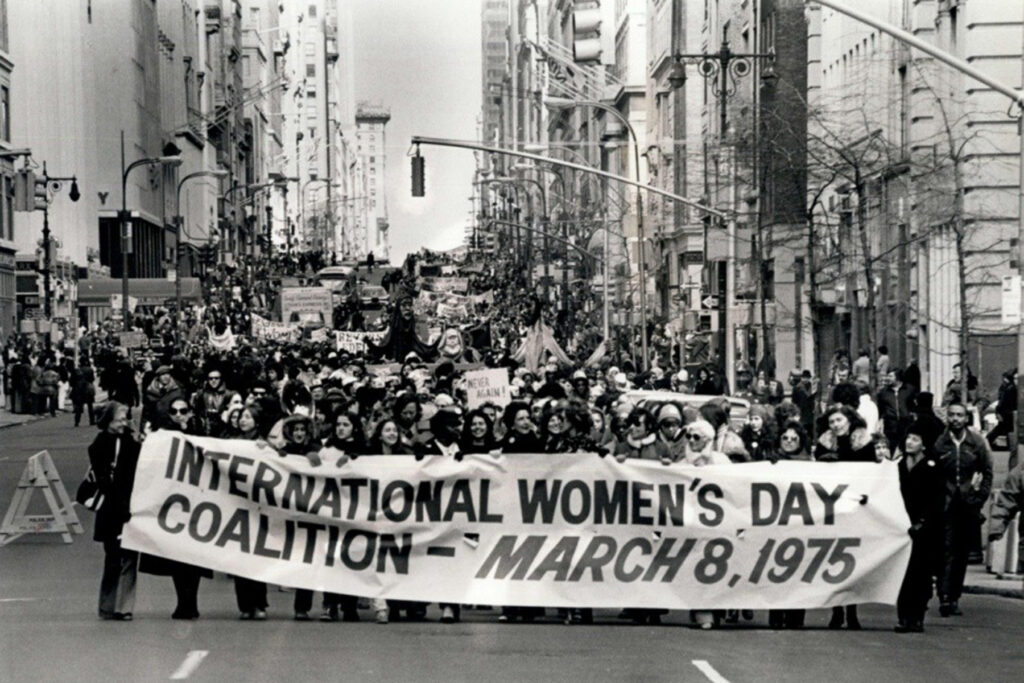
As we delve into the storied past of International Women’s Day, it is crucial to acknowledge the profound historical context from which this day emerged. It is a testament to the resilience and activism of women, whose valiant efforts have long been a catalyst for social change.
The Socialist Beginnings and the UN Adoption
The inception of International Women’s Day is deeply rooted in the socialist movement of the early 20th century, where women’s labor activism played a pivotal role in shaping the narrative for equality. This profound correlation between women’s history and socialism is evidenced by their struggle for better working conditions, voting rights, and equal treatment in society. It was a time driven by a powerful sense of solidarity that transcended borders, laying a foundation for future generations to build upon.
In 1975, the United Nations officially recognized International Women’s Day, thereby legitimizing its importance on the global stage. This momentous occasion signified a commitment by member states to elevate discussions and actions concerning gender equality and women’s advancement. The UN adoption not only provided a universal framework but also amplified the significance of women’s contributions worldwide.
Annual Themes and Their Significance
Every year, a new theme for International Women’s Day is meticulously chosen by the United Nations. These themes are not arbitrary; they serve as a powerful reflection of pressing issues that demand attention and action. Through these themes, the UN seeks to highlight specific challenges and opportunities related to women’s rights, fostering a concentrated effort to promote positive change across various sectors.
| Year | Theme | Significance |
|---|---|---|
| 2019 | Think Equal, Build Smart, and Innovate for Change. | Encourages the pursuit of gender equality in the digital age and supports women’s role in technological development. |
| 2020 | I am Generation Equality: Realizing Women’s Rights | |
| 2021 | Women in leadership: Achieving an equal future in a COVID-19 world | Celebrates the efforts of women and girls around the world in shaping a more equal future and recovery from the COVID-19 pandemic. |
| 2022 | Gender equality today for a sustainable tomorrow | Recognizes the contribution of women and girls around the world, who are leading the charge on climate change adaptation, mitigation, and response, to build a more sustainable future for all. |
These International Women’s Day themes are not only commemorative but also serve as a clarion call to galvanize communities, businesses, and governments to implement initiatives tackling the outlined issues. As we look forward to the annual themes, let us use them as a roadmap towards crafting a future where the principles of gender equality are woven into the fabric of society.
Understanding Gender Equality and Women’s Rights
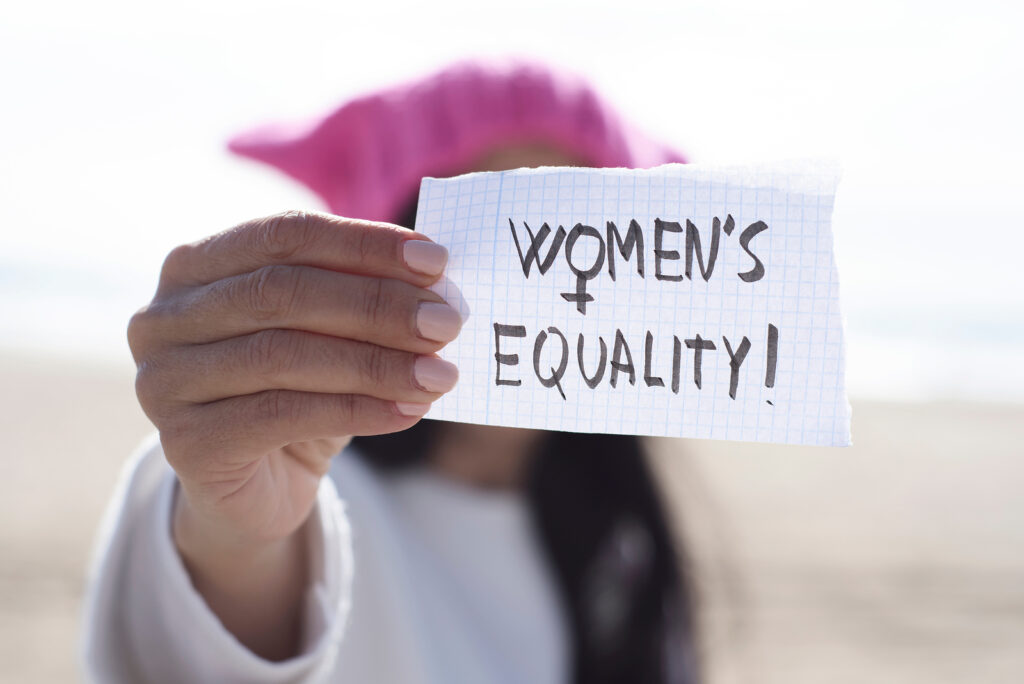
When we delve into the gender equality movement, it is evident that its very ethos has been pivotal in molding societies where every individual, irrespective of gender, is accorded equal opportunities and rights. This transformative concept isn’t just an abstract ideal; it’s a concrete foundation that’s crucial for nurturing a world that celebrates and enables the full participation of all its citizens.
The histories of feminism and social justice are rich and varied, documenting a long-standing struggle for the recognition and realization of women’s rights. Tracing this timeline, we uncover a lineage of battles fought and victories won that commenced with the early suffrage movements. This incessant push for legal protections and societal reform has seeped through the veins of history, emerging with vigor in modern-day advocacy.
We remember the past to navigate the future. The history of women’s rights is not just a timeline but a roadmap for our continual quest for equality.
- Suffrage movements of the 19th and 20th centuries: A keystone in the arch of women’s rights advocacy.
- The legislative leaps of the mid-20th century: erecting pillars of protection and parity.
- The crescendo of the 21st-century feminist wave: amplifying voices for a comprehensive spectrum of rights and representations.
Through this kaleidoscope of activism and reform, a pattern emerges: it is the resilience and relentless spirit of those who shoulder the gender equality movement that drives us forward. As we continue to write the narrative of social progress, we draw strength from the indomitable courage that has been the hallmark of the quest for gender equality throughout history.
Breakthrough Achievements in Women’s History
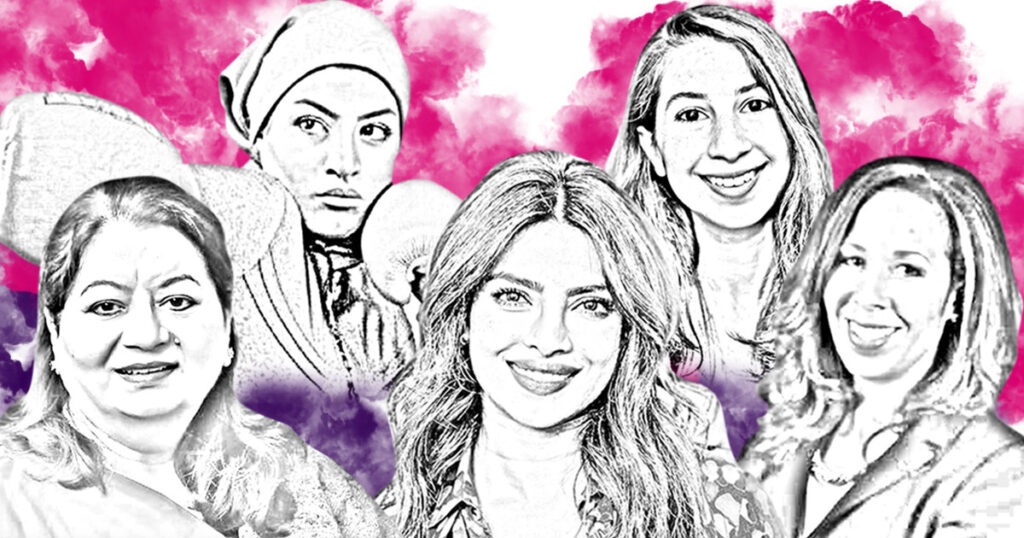
We have witnessed an era marked by extraordinary women’s achievements, a testament to the unyielding spirit of female empowerment. Individuals who were once pioneers in their own right have carved paths for legislation and societal transformation, permanently altering the landscape of our shared history.
Pioneers of Women’s Rights Movements
Among these towering figures stands Susan B. Anthony, a name synonymous with the suffrage movement, whose tireless activism laid the groundwork for women’s voting rights. Similarly, the indomitable Rosa Parks’ pivotal role in the Civil Rights Movement sparked a nationwide conversation on racial equality and intersecting social justices, providing a powerful narrative for the pursuit of female empowerment.
Milestones in Legislation and Representation
The passage of the 19th Amendment in the United States remains one of the most monumental legislative triumphs, symbolizing a pronounced victory for women’s political representation. This milestone, along with numerous others globally, reflects not only progress in the laws that govern us but also advances the cause of gender equality in legislative chambers worldwide.
Feminism and Its Role in Promoting Gender Equality
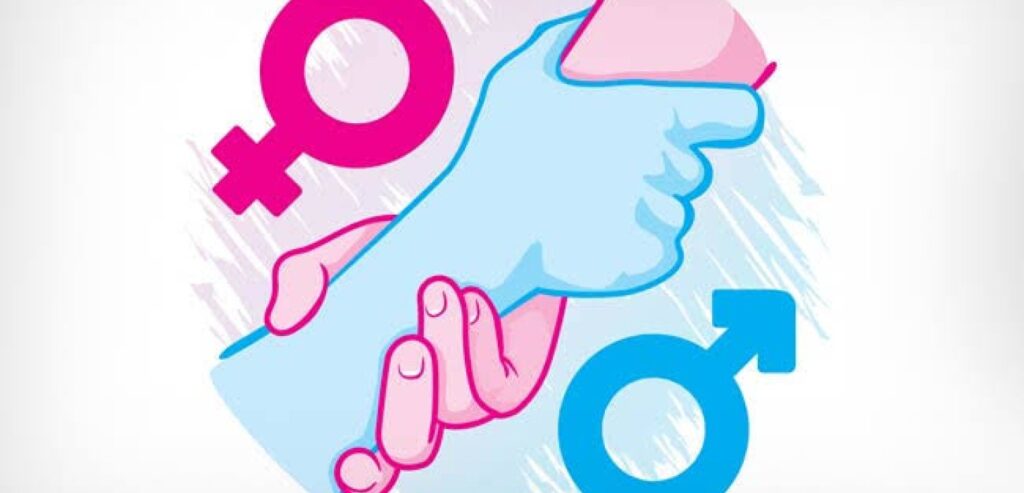
As we delve into the intricacies of feminism, it’s vital to recognize its monumental influence on the advancement of gender equality. Spanning over a century, this diverse and dynamic movement has played a pivotal role in challenging the status quo and advocating for the essential women’s rights that form the bedrock of social justice. We have witnessed the unfolding narrative of feminism through its various waves, each contributing unique perspectives and strategies to the fight for equality.
Feminism’s first wave was characterized by suffragist movements, cementing women’s right to vote. The second wave expanded the battle, focusing on legal and social equality. The third and ongoing waves tackle a broader spectrum of issues, including intersectionality and global sisterhood. Now, let us explore the contemporary landscape where feminism intersects with issues of race, class, and sexuality.
| Feminist Wave | Time Period | Key Focus | Impact on Gender Equality |
|---|---|---|---|
| First Wave | Late 19th to Early 20th Century | Suffrage; Women’s Voting Rights | Lay the foundation for political engagement. |
| Second Wave | 1960s to 1980s | Legal and social equality | Challenged gender norms and discrimination |
| Third Wave | 1990s to Present | Intersectionality and Global Feminism | Expanded the movement to include diverse voices. |
Our scrutiny of the current feminist discourse highlights how inclusivity and intersectionality are paramount. Feminism now acknowledges that a person’s experience with gender discrimination cannot be disentangled from other facets of their identity, such as race and socioeconomic status. This expansive approach moves us closer to a more holistic understanding of social justice and enriches our strategies for cultivating gender equality amidst a complex array of individual experiences.
- Intersectional feminism broadens advocacy beyond gender lines.
- Modern feminism emphasizes the importance of global solidarity.
- Inclusive movements amplify marginalized voices.
To continue progressing toward a future where equality reigns supreme, we must perpetuate this transformative dialogue. In turn, such collaborations will further cement the tenets of feminism as not only a historical force but as an ongoing catalyst that fuels our collective journey towards enduring gender equality.
Women’s Empowerment in the Workplace

The quest for women’s empowerment has accelerated in recent years, pushing the boundaries of traditional corporate structures and inviting a broader conversation about gender parity and leadership roles. At the core of this discussion is the dismantling of the glass ceiling, an invisible barrier that has historically hindered women’s ascent to top positions within companies. We’ll explore how resilient women have transcended these limitations and the deliberate strategies put in place to ensure that these ceilings continue to shatter.
Shattering the Glass Ceiling: Success Stories
We are inspired by the tenacious women who have climbed the ladders of their industries, breaking barriers and setting new precedents for leadership. These leaders come from various sectors—technology, finance, and healthcare—and their journeys underscore the potential of women’s empowerment. They’ve not only secured executive roles but have also redefined corporate culture, fostering environments that nourish the ambitions of the future female workforce.
Strategies for Achieving Gender Parity in Leadership
To address the challenges of gender disparity, leading companies are implementing targeted strategies. These strategies emphasize creating pipelines for female talent, providing mentorship programs, and ensuring equitable employee benefits. Effecting change requires a multifaceted approach, with an emphasis on creating measurable objectives for gender diversity within leadership roles, strong accountability frameworks, and a transparent culture that values inclusion.
“True diversity isn’t just about checking a box. It’s about fostering an environment where different perspectives are valued and all employees can thrive.” – Forging Ahead in Leadership
- Implementing gender-neutral recruitment policies
- Offering flexible work schedules to accommodate personal commitments
- Providing training and resources for professional development
- Initiating mentorship and sponsorship programs
- Monitoring progress through transparent reporting and analytics
| Initiative | Objective | Expected Outcome |
|---|---|---|
| Leadership development programs | To equip potential female leaders with critical skills | Increased representation of women in leadership positions |
| Pay equity audits | To identify and address compensation gaps between genders | Closure of the gender pay gap and improved job satisfaction |
| Company-wide Diversity and Inclusion Training | To raise awareness about unconscious biases | A more inclusive workplace culture |
Celebrating Women in Diverse Fields
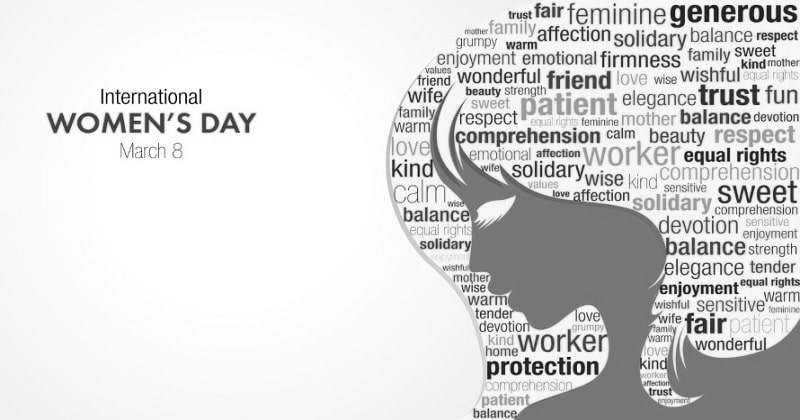
As we delve into the myriad of achievements made by women, it’s imperative to shine a spotlight on the fields where their impact has been revolutionary. These domains range from the precise and logical realms of STEM to the expressive and boundless world of the arts. Furthermore, the influence these dedicated women hold extends beyond their immediate sectors, permeating into the political landscape and grassroots activism, where their actions orchestrate significant societal transformation.
Innovation and Creativity: Women in STEM and the Arts
Women in STEM have not only contributed to groundbreaking scientific discoveries but have also paved the way for future generations of women to aspire to roles historically dominated by men. Their resilience is mirrored by female artists who redefine boundaries with their unique perspectives, shaping cultural discourse and pushing forward the narrative of creativity and innovation.
| Field | STEM | Arts |
|---|---|---|
| Pioneers | Mae Jemison, the First African American Woman in Space | Frida Kahlo, a Renowned Painter with a Lasting Legacy |
| Key Contributions | Advancements in Technology and Medicine | Social and Political Commentary Through Visual Arts |
| Current Leaders | Fei-Fei Li, leading AI researcher | Yayoi Kusama, an influential contemporary artist |
Influence and Advocacy: Women in Politics and Activism
Simultaneously, women in politics and women activists are implementing policies and driving movements that lay the cornerstones for justice and equality. From boardrooms to chambers of government, their strategic play on influence redefines leadership and empowers community-wide engagement in critical societal issues.
- Shirley Chisholm, an unbossed and unbought trailblazer in politics
- Greta Thunberg, Youth Climate Change Activist Stirring Global Conversations
- Malala Yousafzai, Nobel Laureate and Advocate for Girls’ Education
International Women’s Day Around the World
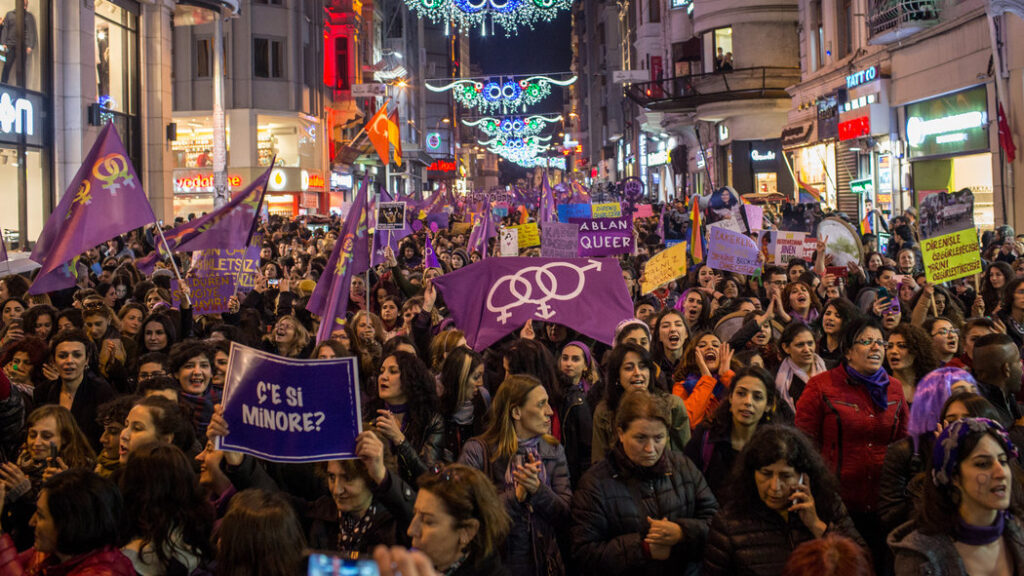
Every year, International Women’s Day serves as a vibrant global celebration, honoring women’s achievements and highlighting the immense cultural diversity that enriches our planet. From continent to continent, the ways in which this day is observed are as varied as the societies themselves, reflecting a collective respect for the progress women have made and the work that continues to push us forward.
In Spain, throngs of women take to the streets in solidarity, their voices resounding in a call for justice and equality. Meanwhile, in Japan, ‘Kimi no Na wa’ gatherings offer platforms for women to share life stories, often sparking deep connections and fostering a sense of community. Over in Africa, countries like Nigeria feature market celebrations where women artisans proudly showcase their crafts, symbolizing both their economic contributions and creative spirit.
- New York City, USA: Marches and networking events converge, empowering women across different industries to mentor and grow.
- New Delhi, India: Cultural performances and talks spotlight the achievements of Indian women, from grassroots activists to leaders in technology.
- São Paulo, Brazil: Public debates and art installations provoke discussions on women’s rights and celebrate their artistic influence.
As we bear witness to these varied forms of observance, we find ourselves inspired by the unified message of International Women’s Day: the push for gender equity knows no borders, and every story of perseverance adds to the rich tapestry of collective success. The tales that emerge from these international celebrations not only deepen our understanding of one another but also galvanize us toward continued action and advocacy for the rights of women everywhere.
Let us take a moment to appreciate the mosaic of cultural traditions that make International Women’s Day such a unique experience worldwide. As we reflect on this, we’re reminded that our efforts to promote gender equity and celebrate women’s achievements are part of a larger, interwoven global narrative—each of us contributing to a more just and inclusive world.
Challenges Ahead on the Path to Equality
As we navigate the ever-evolving landscape of the equality movement, we encounter enduring obstacles that highlight the need for continued advocacy and reform. Addressing systemic issues such as the pay gap and gender discrimination remains a paramount concern. Moreover, the pervasive problem of violence against women demands our global attention and action to foster a safer and more equitable society for all.
Addressing Pay Gaps and Gender Discrimination
The pay gap is a stark manifestation of gender discrimination, reflecting a broader societal trend that undervalues women’s work and contributions. Despite progressive strides, the wage disparity persists, with women earning substantially less than men for equivalent work. To dismantle these entrenched systems, we must scrutinize policies and advocate for transparent practices that promote fairness in compensation and opportunity.
By highlighting unjust wage disparities and championing equal pay for equal work, we strengthen the foundation for a more just and equitable workforce.
Combating violence against women globally
The scourge of violence against women is a blight on communities across the globe, transcending borders and cultures. From domestic abuse to systemic violence, these heinous acts continue to threaten the safety and freedom of women worldwide. It’s imperative that we unite in a concerted effort to combat this violence, leveraging international cooperation and robust legal frameworks to secure justice and protection for women.
Whether it’s through education, legal reform, or community engagement, every action we take is a step towards eradicating violence and fostering safety and respect for women everywhere.
| Challenge | Impact | Actions Needed |
|---|---|---|
| Pay Gap | Perpetuates economic inequality and underrepresentation in leadership roles. | Enactment of equal pay legislation, wage transparency, and advocacy for employment policies that level the playing field |
| Gender Discrimination | Limits career progression and access to education and healthcare | Implement anti-discrimination laws, promote diversity and inclusion initiatives, and support women’s access to essential services. |
| Violence Against Women | Compromises women’s safety and undermines their physical and psychological well-being. | Strengthen legal protections, increase funding for support services, and elevate community awareness to prevent and respond to violence. |
In our collective journey towards a world where equality reigns, these challenges are just milestones that gauge our progress and resolve. As advocates and supporters of the equality movement, we are committed to channeling our collective efforts into actions that bridge gaps, dismantle barriers, and empower those who face discrimination. Each challenge we overcome brings us closer to the equitable world we envision.
Inspiring Stories of Female Empowerment
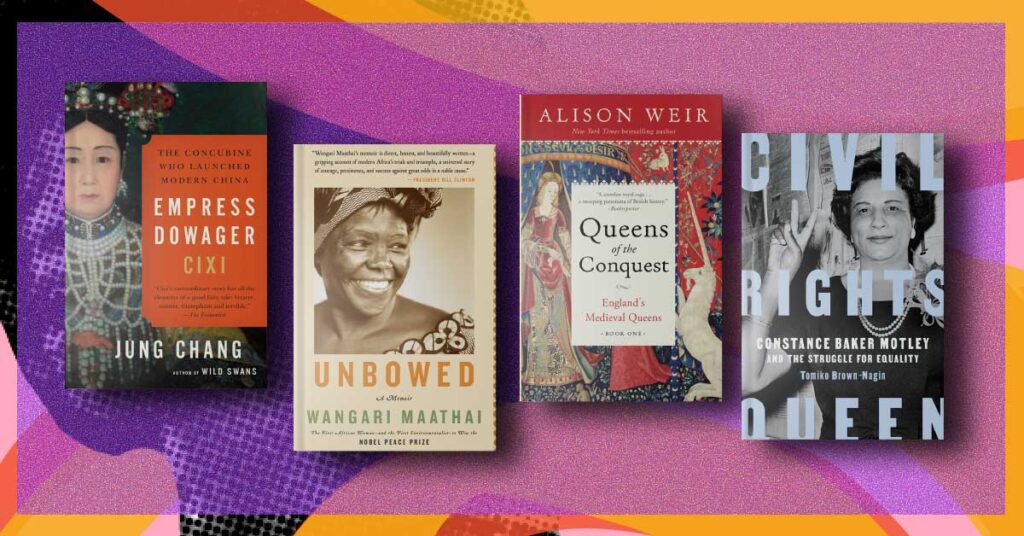
Within the fabric of our society, a tapestry of female empowerment has been woven by inspiring women who have shed the constraints of tradition to redefine what it means to be a leader and advocate for social justice. Their legacies and the grassroots movements they have spawned are undeniable testaments to the transformative power of courage and conviction.
Fierce Voices: Women Who Changed the Narrative
Throughout history and into the modern era, women have risen against odds, turning their personal battles into universal campaigns. We recount the narratives of women like Malala Yousafzai, who championed education rights for girls in the face of adversity, and Tarana Burke, who ignited a global conversation through the #MeToo movement, emboldening survivors to speak out. These are not just stories; they are beacons, illuminating a path for others to follow.
We stand on the shoulders of the brave women who came before us, our pursuit of equality echoing their fierce voices that changed the narrative for women everywhere.
Grassroots Movements: Local Actions Shaping Global Change
It is not solely the efforts of individuals but also the collective actions of communities that sculpt the bedrock of social reform. The grassroots movements, often initiated by local groups of steadfast women, ripple outward with profound global impacts. From local campaigns for reproductive rights to neighborhood networks supporting victims of domestic violence, the seeds sown by these local actions bear fruit on the world stage of gender equality.
| Movement | Origin | Impact |
|---|---|---|
| Women’s March | Washington, D.C., USA | A global march advocating for legislation and policies regarding human rights and women’s rights. |
| #HeForShe | United Nations | A solidarity movement for gender equality that brings together one half of humanity in support of the other half for the entirety of humanity. |
| Ni Una Menos | Argentina | A collective campaign against gender-based violence that has gained momentum across Latin America. |
We celebrate these inspiring women and movements, recognizing that each voice and action contributes to a chorus calling for respect, inclusion, and justice.
Conclusion
As we draw our reflections on International Women’s Day to a close, we are reminded that this commemoration is more than a date in the calendar—it’s a resonating echo of empowerment and a clarion call to action that reverberates across the globe. It’s a day where we not only celebrate women’s achievements but also take stock of the work that remains. We acknowledge the remarkable progress that’s been made in the realm of gender equality while also recognizing the resistance and challenges that persist.
Our journey through history today has highlighted the unparalleled contributions of women in various domains. From the pioneers who defied odds to lay down the foundations of women’s rights to the innovators and leaders shaping our future, their stories form a rich tapestry that illustrates the boundless potential of women when barriers are dismantled. Yet, as we honor these contributions, we bolster our resolve to tackle the ongoing issues of pay disparity, representation, and social justice.
In essence, International Women’s Day fuels a movement that goes beyond the events of a single day. It ignites a year-long campaign for awareness, advocacy, and action aimed at creating a more just and equitable society. Let us carry forward the spirit ingrained in today’s narrative, driving the momentum that powers the wheels of change. Together, we can transform the vision of equality from an aspirational ideal into a lived reality for all, reinforcing our collective commitment to the enduring pursuit of an equitable world. International Women’s Day is a milestone not just to mark progress but to passionately persist in the face of adversity, ensuring that every day is a step closer to true equality.
FAQ
What is International Women’s Day?
International Women’s Day is a global celebration observed on March 8th each year, dedicated to acknowledging women’s achievements, calling for gender equality, and highlighting the continual efforts towards women’s empowerment. It is marked by various events worldwide, ranging from political rallies to networking events and local community talks, all aimed at fostering gender parity and celebrating the social, economic, cultural, and political contributions of women.
How did International Women’s Day begin?
International Women’s Day has socialist roots dating back to the early 20th century. It was first proposed by the Socialist Party of America to honor the 1908 garment workers’ strike in New York. This day eventually gained international recognition and was celebrated by socialist movements and communist countries. In 1975, the United Nations officially recognized International Women’s Day, giving the day a global dimension for women’s rights and world peace.
Why are there annual themes for International Women’s Day?
Annual themes for International Women’s Day serve as concentrated focal points aimed at drawing attention to specific challenges facing women and mobilizing action towards resolving them. Themes selected by the United Nations and other organizations can reflect current events, emerging trends, or pressing matters in gender equality and women’s rights, helping to unify global advocacy efforts under a common slogan or goal each year.
What is gender equality, and why is it important?
Gender equality refers to the equal rights, responsibilities, and opportunities of women and men, girls and boys. It is important because it is a fundamental human right and a necessary foundation for a peaceful, prosperous, and sustainable world. Gender equality implies that the interests, needs, and priorities of both women and men are taken into consideration, recognizing the diversity of different groups of women and men.
Who are some pioneers of the women’s rights movements?
Pioneers of women’s rights movements include notable figures such as Susan B. Anthony, who played a pivotal role in the women’s suffrage movement in the U.S., and Rosa Parks, whose actions contributed to the civil rights movement. Other influential figures include suffragettes like Emmeline Pankhurst from the U.K., as well as women leaders like Eleanor Roosevelt, who was instrumental in drafting the Universal Declaration of Human Rights.
What are key milestones in women’s rights legislation?
Key milestones in women’s rights legislation include the passage of the 19th Amendment in the United States, which granted American women the right to vote. Globally, the Convention on the Elimination of All Forms of Discrimination against Women (CEDAW), adopted by the United Nations General Assembly in 1979, is often described as an international bill of rights for women.
How does feminism contribute to promoting gender equality?
Feminism is a socio-political movement that aims to establish and achieve equal political, economic, personal, and social rights for women. It contributes to gender equality by challenging historical and systemic inequalities that women face and advocating for women’s rights and interests. Feminism has evolved over time to include diverse perspectives and address intersectional issues, such as race, class, and sexuality, to build a more inclusive movement.
What are effective strategies for achieving gender parity in leadership?
Effective strategies for achieving gender parity in leadership include implementing policies that promote flexible work arrangements, offering mentorship and sponsorship programs, requiring diverse candidate slates for leadership positions, and establishing targets or quotas for women’s representation in boardrooms and executive roles. Cultivating an organizational culture that values diversity and inclusion is also crucial to achieving gender parity.
How do different countries celebrate International Women’s Day?
Different countries celebrate International Women’s Day in a myriad of ways, reflecting their unique cultural contexts and traditions. For instance, some countries recognize it as a national holiday where women are honored with gifts and celebrations, while in others, the day is observed with conferences, marches, or social media campaigns focusing on women’s rights and issues. Community discussions, arts performances, and educational events are also common ways to celebrate the day globally.
What challenges do we still face on the path to gender equality?
Challenges on the path to gender equality include addressing the gender pay gap, gender discrimination in various forms, and the underrepresentation of women in leadership and decision-making roles. Other significant issues involve combating systemic barriers that limit women’s economic participation and access to education and healthcare, as well as eradicating violence against women and girls globally.
Can you share some inspiring stories of female empowerment?
Inspiring stories of female empowerment abound, from the fearless activism of Malala Yousafzai for girls’ education to the leadership of Jacinda Ardern as the Prime Minister of New Zealand. We find inspiration from Tarana Burke, who started the Me Too movement to support survivors of sexual violence, or from the women who founded Black Lives Matter, to individuals spearheading grassroots organizations that advocate for the rights of women and girls in their local communities and beyond.
